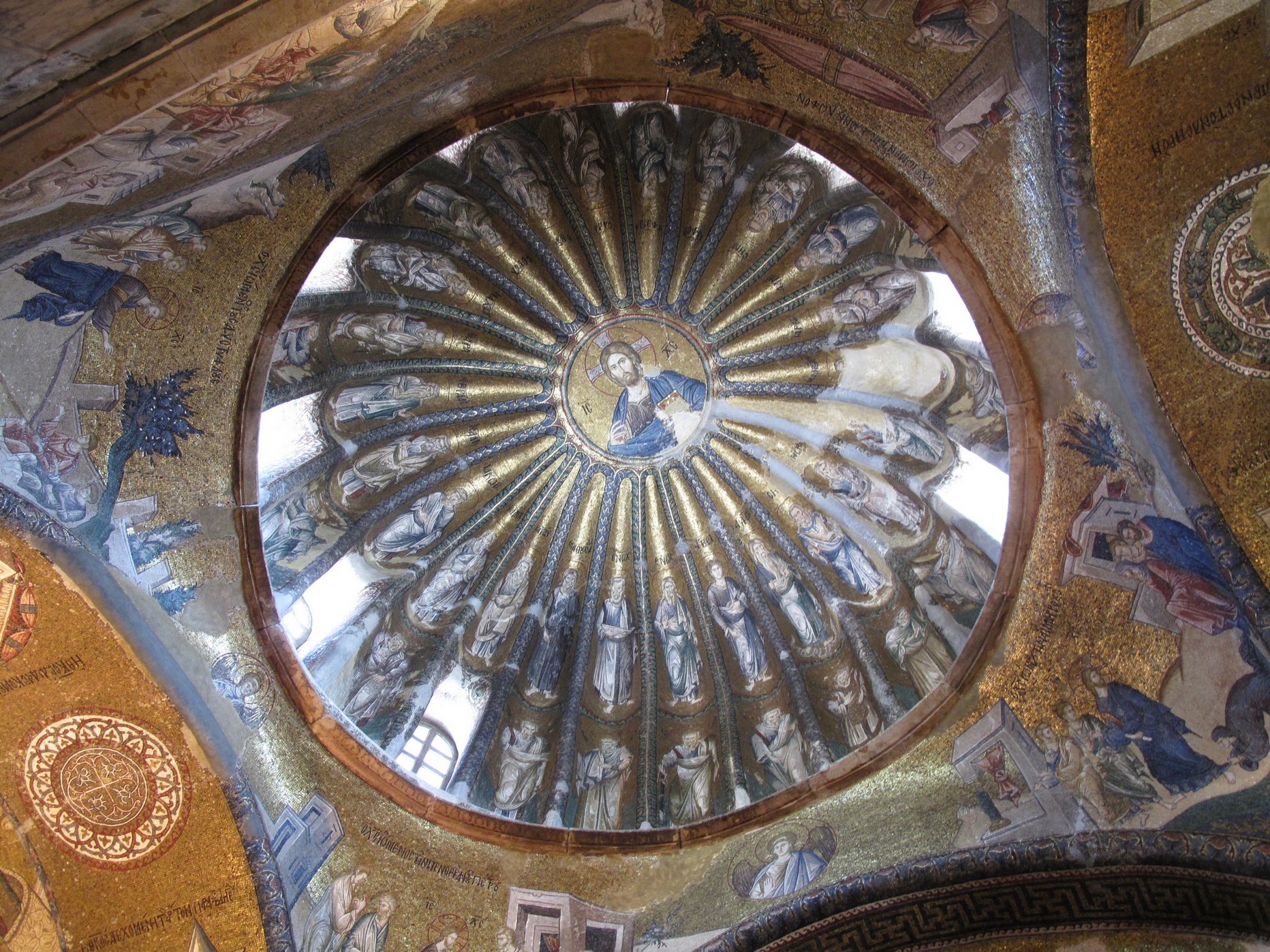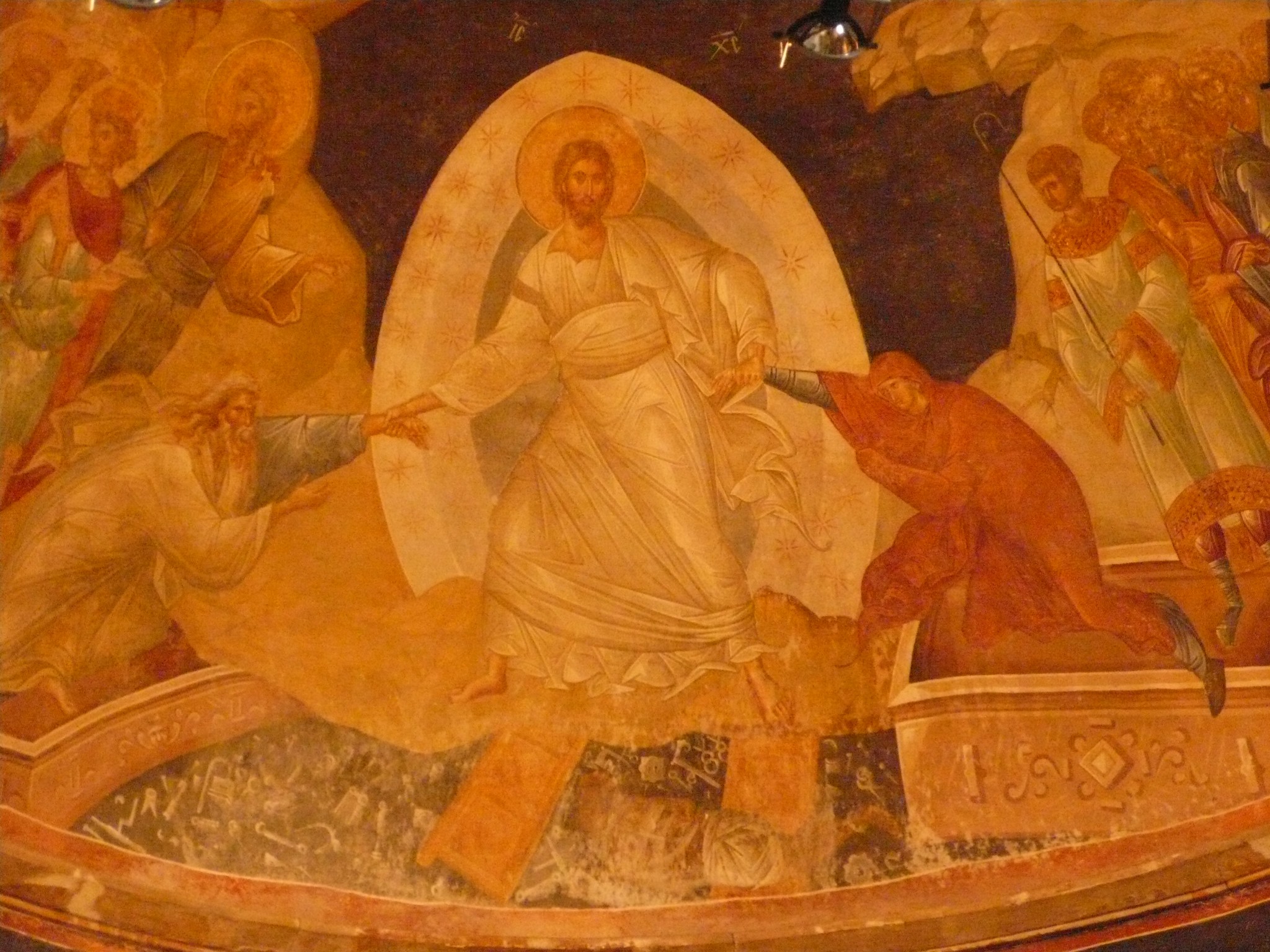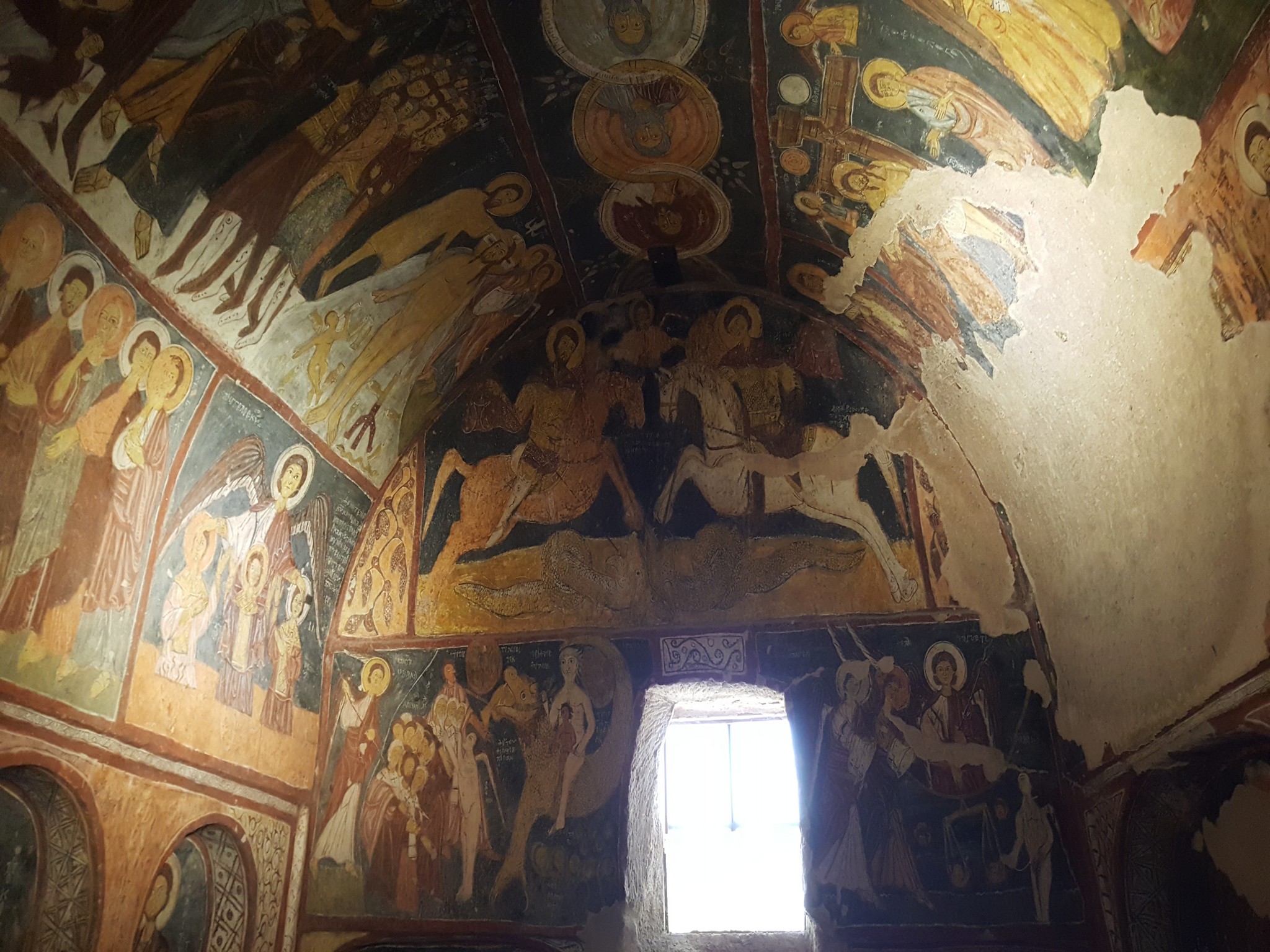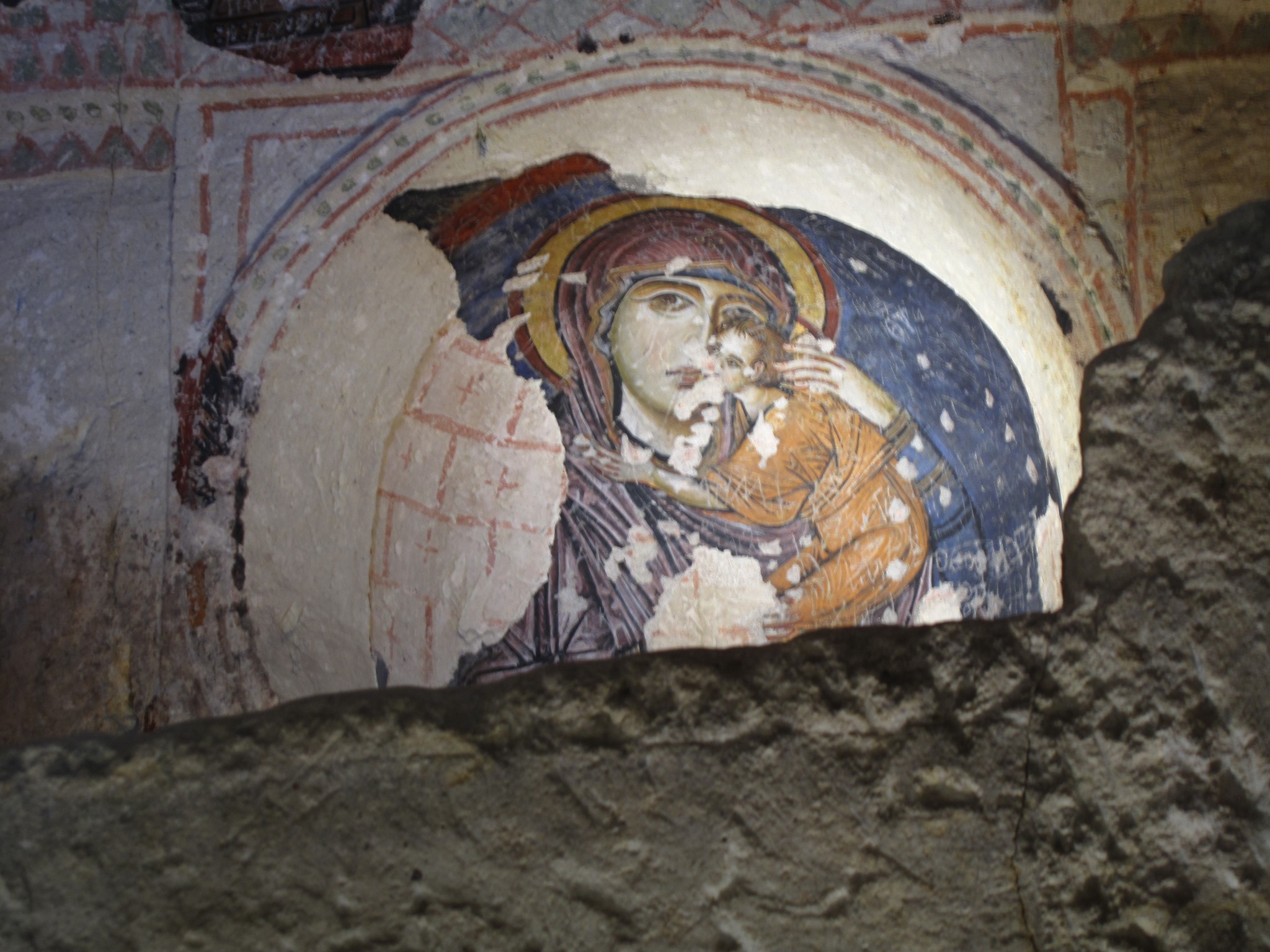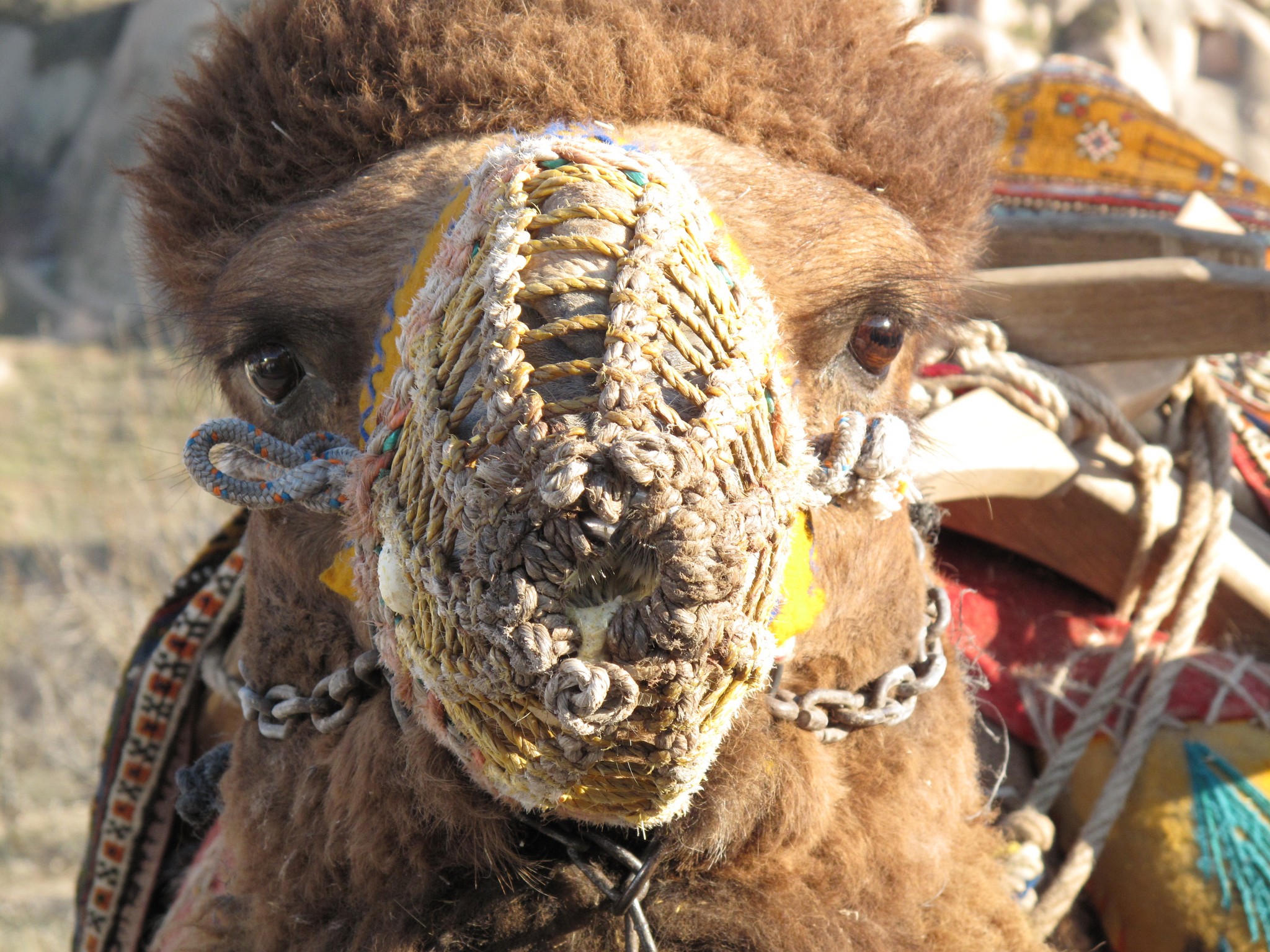General
”In journeys often, in perils of waters, in perils of robbers, in perils by mine own countrymen, in perils by the heathen, in perils in the city, in perils in the wilderness, in perils in the sea, in perils among false brothers. ( 2 Corinthians 11:26) St. Paul was born a Jew of the tribe of Benjamin in Tarsus about AD 10 and spent his early years here. His father was a Roman citizen; St. Paul inherited that citizenship and its rights. ( Acts 21:39 ) Then he was sent to Jerusalem to study. St. Paul spent most of his Christian life traveling over thousands of miles by land and sea, facing endless difficulties. These journeys were a great hardship for St. Paul who had to cover most of the area on foot. Our journey through the same routes will not be as difficult.
Day 1 Istanbul Arrival Arrival at Istanbul Ataturk Airport.
You will be met and transferred to your hotel. After check in we will have a welcome cocktail. Dinner and Overnight. (D)
Day 2 Istanbul Full Day City Tour
We begin our day with a tour of the Sultan Ahmed square, located at the heart of the “Old City” from where the Byzantine and the Ottoman Empires were ruled from. We will walk the Hippodrome square, which was the epicenter of the sportive events and political activities of Constantinople in Roman and Byzantium periods. We will see and talk about the histories of the Obelisk of Theodosius, the Serpentine Column and the German Fountain of Wilhelm II. Then we take a short walk to the Blue Mosque, famous with its blue Iznik tiles and with its unique 6 minarets, built in the early 17th century. Next we visit the Hagia Sophia, one of the greatest marvels of the art & architecture history, constructed as the patriarchate cathedral in the 6th century by the Emperor Justinian. Lunch in a local restaurant. Next; a short drive to Chora Museum, a small church that was decorated with the most beautiful biblical mosaic panels and frescoes in the 14th century.
Day 3 Istanbul – Adana – Tarsus – Antioch (Antakya)
We will take an early flight to Adana, ancient Cilicia, and will drive straight to Tarsus, the birth place of St. Paul. St. Paul was born a Jew of the tribe of Benjamin in Tarsus about AD 10 and spent his early years here. His father was a Roman citizen; St. Paul inherited that citizenship and its rights. (Acts 21:39) Then he was sent to Jerusalem to study. During St. Paul’s time Tarsus was a university city surpassing Athens and Alexandria and the romantic meeting between Cleopatra and Marcus Antonius took place in Tarsus. Highlights here will be The Church of St. Paul, St. Paul’s well and Cleopatra’s Gate. Numerous people believe that the water from St. Paul’s well has healing properties. Then we will drive to Antioch (Antakya). Dinner and overnight in Antakya. (B,L,D)
Day 4 Antioch (Antakya) – Daphne – Seleucia Pieria – Adana
After breakfast we will see Antioch, Biblical “Antioch on the Orontes”, Daphne and Seleucia Pieria. In Antioch, first to preach here was St. Peter followed by St. Paul and Barnabas whose extensive efforts proved to be very fruitful for Christianity. St. Peter was the first to establish a church in Antioch; this belief is based on the references in Acts 9:32 and in Galatians 2:11. Incidentally, the word Christians was first coined in Antioch. It was in Antioch that the disciples were first called the ‘Christians’ (Acts 11:26). Antioch served as the home base for St. Peter, St. Paul and Barnabas; shortly it became the third most important bishopric (after Jerusalem and Rome) in the developing church. Then we will go to to Seleucia Pieria that is mentioned in the New Testament only as the port from which St. Paul and Barnabas set sail for Cyprus on their first missionary journey. (Acts 13:4) Highlights include the museum which houses a superb collection of mosaics from Antioch, Daphne and Seleucia Pieria and St. Peter’s Grotto, the first Christian church where early Christians of Antioch met in secretly. Drive to Adana for dinner and overnight. (B,L,D)
Day 5 Adana – Kaymaklı Underground City – Cappadocia
Today we visit one of the largest underground cities of Cappadocia: Kaymakli. This magnificent underground city is dating back to 3000 BC and eight storey deep. Thousands of early Christians had lived and took refuge in Kaymaklı to survive against the persecution by the Romans. So far 36 underground cities are known in Cappadocia area. Then we will see fascinating commonly called “Fairy Chimneys” that are volcanic rock formations jutting out from the earth that have been shaped by the wind and rain. The Fairy Chimneys of Cappadocia are a striking example of how geography and human habitation have worked together, and how geography has influenced people’s imaginations. Dinner at hotel and overnight. (B,L,D)
Day 6 Cappadocia – Goreme and Zelve Valleys
Right after breakfast, we proceed to the Open Air Museums of Goreme and Zelve Valleys to visit the rock carved churches hollowed out of volcanic ash, dating back to the IV-XIII centuries. Then we will walk around Pasabag to see the most picturesque rock formations in Cappadocia region. Dinner and overnight. (B,L,D)
Day 7 Cappadocia – Iconium (Konya)
Driving to Iconium (Konya ) city which is almost due south of Ankara; it has long been crossing point for many trade routes. Today its definition is its importance as a place of Christian and Muslim pilgrimage. Two thousand years ago Konya was called Iconium; St. Paul came here with Barnabas and preached here on his first missionary journey in 47 A.D. and Iconium became an important Christian city following St. Paul’s preachings. ( Acts 14: 1-6 ). They stayed in Iconium for some time and spoke so effectively that many people became Christian. St. Paul made two more stops here on his second and third journeys. Konya is a quite new city but the center of the city is very old. Before the end of the day; Visit the museum of Mevlana the founder of ‘Sufi’ wisdom and his Whirling Dervishes. Dinner and overnight. (B,L,D)
Day 8 Konya – Psidian Antioch – Antalya
Early morning we will drive to Psidian Antioch (Yalvac) where St. Paul and Barnabas visited on their first missionary journey. During St. Paul’s time the population was a mixture of Jews, Romans and Greeks. On his first missionary journey St. Paul went to the synagogue on the Sabbath (the Jewish day of worship), and St. Paul was asked to speak to the congregation. In the Bible this is St. Paul’s first recorded sermon. What St. Paul said about Christianity so interested his listeners that he had an overflow audience the next week. The members of the synagogue took violent exception to what St.Paul was doing (Acts 13:14-52). We will be visiting what is left of Psidian Antioch today. There is the propylaea of the acropolis with a number of carved stones and the remains of a Byzantine church. We pass by Egirdir Lake and arrive in Antalya for dinner and overnight. (B,L,D)
Day 9 Perge – Side – Manavgat Waterfalls – Antalya Half Day City Tour
Ruins of Perge are 18 kms to the northeast of Antalya. Perge is one of the cities that St.Paul visited with Barnabas and his cousin John Mark on their first missionary journey in about AD 47 or 48 ( Acts 13:13, 14:25 ). It was Perge that John Mark left the others to return Jerusalem. John Mark did not accompany St. Paul on the second missionary journey; instead he and Barnabas went together to Cyprus while St.Paul went with Silas into Anatolia ( Acts 15:63-41 ). Perhaps St. Paul and John Mark were reconciled later for St. Paul includes greetings from a Mark to Philemon ( Philem. 24 ). Highlights are, the Gymnasium, the Bath, the Agora, the Theater, the Stadium and the Hellenistic Gate. After we finish our visit in Perge, we will continuo to Side. Side was an important port on the Mediterranean from the time it was founded about the 6th century BC until the 7th century. Roman engineers brought Side’s water through tunnels and an aqueduct from about 30 km inland. Today’s Side is built exactly on top of the ancient city. We will have lunch and see Manavgat waterfalls. Then we will drive back to Antalya. Antalya located in the region called Pamphylia, was founded by Attalus II, King of Pergamum in the 2nd century BC. St. Paul sailed from Antalya about AD 48 on his return to Antioch after his first missionary journey. Dinner and overnight in Antalya. (B,L,D)
Day 10 Laodicea Ad Lycum – Hierapolis – Pamukkale
After breakfast we leave our hotel and drive to Hierapolis but before we get here we stop at Laodicea Ad Lycum. The site of one of the Seven Churches addressed by St.John in the Book of Revelation ( Rev. 3:14-22 ), Laodicea is on a low hill on the south bank of the Lycus River (Curuksu). As a commercial center,it had a large Jewish community. For St.John in Revelation, the Christians of Laodicea were neither hot nor cold and because of their indifference he wanted to spew them out of his mouth. “ I know all your ways, you are neither hot or cold. How I wish you were either hot or cold. Because you are lukewarm, neither hot nor cold, I will spit you out of my mouth” ( Revelation 3:15-17 ) St. John promised in “ the words of the Amen” (Revelation 3:14) that for those who were sensitive enough to hear and respond to what was being said, the Spirit would join them in the great feast. “Here I stand knocking at the door; if anyone hears my voice and opens the door, I will come in and sit down to supper with him and he with me “ ( Revelation 3:20) Then we will drive to Pamukkale (The Cotton Castle of white travertine terraces), and Hierapolis ancient city where St. Philip was martyred in 80 AD.. Recently Italian archaeologists have discovered his Martyrium, an octagonal chamber forming a double cross surrounded by a square. St. Philip lived here after the Apostles scattered from Jerusalem. Hierapolis is listed in the New Testament along with Laodicea as the center of Epaphras’s work ( Colossians 4:13 ). Dinner and overnight in Pamukkale (B,L,D)
Day 11 Pamukkale – Philadelphia – Sardis – Kusadasi
After breakfast drive to Philadelphia. During Byzantine times Philadelphia was the seat of a Christian bishop and It is significant in Christian history because its congregation was addressed by St.John in the Book of Revelation (Rev. 3:7-13). Although one of the Seven Churches, Philadelphia was the least distinguished; it was the only one about which St. John had no real criticism. He characterized it as having been given an open door. He told the Christians not to leave anyone take away their crowns and promised that those who were victorious would become pillars in God’s temple. “Hold fast to what you have, and let no one rob you of your crown” (Revelation 3:11). Sardis, whose history dates back to 12 century BC, was the capital of the ancient Kingdom of Lydia. In the book of Revelation ( Rev. 3:1-6), St. John stated that Sardis needed to wake up. He complained that their acts did not live up to their reputation, that they did not finish what they started. But he held out the hope those who were not polluted that they should have robes of white. (Revelation 3:5) White was the color then of righteousness and immortality. After Sardis drive to Kusadasi and overnight. (B,L,D)
Day 12 Kusadasi–Basilica of St. John- Ephesus–House of Virgin Mary–Izmir
This morning we will stop by the Basilica of St. John “The Evangelist” who came here with Virgin Mary and wrote his Gospel in Ephesus. Then we will carry on to Ephesus ancient city. People visiting Ephesus today can visualize the city when it was the capital of the province. St.Paul preached and taught in Ephesus for over 2 years. During that time he sent Timothy and Erastus to Macedonia to continue the missionary work there. The names of several other early Christians are recorded as residents of Ephesus. Among them are the eloquent Apollos with whom St. Paul associated himself, saying that he planted, that Apollos watered, but that God gave the growth (I Cor. 3 :6) A couple, Priscilla and Aquilla, established a house church in Ephesus (I Cor.16:19). The daughters of the Apostle Philip lived in Ephesus. A small stone building high up on the west corner of the city wall is pointed out as St. Paul’s Prison. He wrote the letter to the Ephesians from this place. In Ephesus highlights include Double Church where in 431 the Third Ecumenical Council was held, the Library of Celcius, the Temple of Hadrian, the Fountain of Trajan and the Theater for many Christians the best-known building in Ephesus where a 1st century AD silversmith attempted to stir up a riot to get rid of St. Paul who was damaging his business of making images of Artemis. About 3 miles away in the forested mountain above Ephesus is House of Virgin Mary. Today it is visited by pilgrims from all over the world. It is a modest stone house. St. John brought Virgin Mary to Ephesus in keeping with Jesus’s admonition to him to care for his mother. (John 19:27) House of Virgin Mary, is now visited by almost a million pilgrims each year. The pilgrims come to drink the waters of the sacred spring, to mediate, to pray for health, and to breathe the atmosphere of it. You will be able to collect some holly water from the Sacred Spring. Both Pope Paul VI in 1967 and Pope John Paul II in 1979 have celebrated mass here. Many people congregate at this sanctuary every August 15 to observe the Feast of the Assumption of the Virgin. It was first identified in 1818 by a German nun, Anne Catherine Emmerich, who saw it in a dream exactly as it was found. The setting is beautifully peaceful, inspiring reverence and contemplation. Dinner and overnight in Izmir. (B,L,D)
Day 13 Thyateria – Pergamum – Ayvalik
After breakfast we will drive to Thyatira which is a small modern city today. The old Thyatira, the site of one of the Seven Churches of Asia Minor ( Rev. 2:18-29 ). St. John’s Criticism of Thyatira in Revelation was related to the prophetess Jezebel. Whether she was a real woman of that name or whether he intended her as a symbol of licentiousness, St. John saw the challenge to Christianity which Thyatira represented as a moral decay among the members. To those who refused to compromise with their ideals he promised “ the star of dawn” and “ authority over the nations”. About forty years previous to the time that St. John wrote those words to the congregation in Thyatira, St. Paul had met one of the merchants from there when he arrived in Philippi. This was on his second Journey. The merchant was Lydia, a woman dealing in expensive purple cloth. Under St. Paul’s influence she and her whole household became baptized Christians. Lydia insisted that St. Paul and his companions Timothy and St. Luke should stay in her house in Philippi ( Acts 16:13-15 ). By the end of the 1st century here must have been a sizable Christian community for St. John to have chosen it as one of his seven churches. Pergamum’s place in religious history is largely because of the paragraph addressed to its Christian believers by St. John in the Book of Revelation ( Rev. 2:12-17 ). He characterized Pergamum as the place where Satan was enthroned.( Revelation 2:13 ). St.John saw a group he called the Nicolatinas as an additional threat to the believers. Who these people were is not clearly known. ( Revelation 2:14-15 ) St. John condemned them for adultery and for eating food that had been sacrificed to pagan gods. St. John also promised a white stone and hidden manna to those who repented of their false beliefs and immoral behavior (Revelation 2:16-17). Drive to Ayvalik for dinner and overnight. (B,L,D)
Day 14 Ayvalik – Alexandria Troas – Assos – Bursa
We leave our hotel and proceed to Alexandria Troas. The City’s importance in religious history comes from the visits by St. Paul on his missionary journeys. On his second Journey St. Paul had wanted to go north into Bithynia, but instead he and his companion Timothy were deflected to the Aegean Coast. In the night a Macedonian appeared to St. Paul asking him “Come over to Macedonia and help us”. This is noted as the inspiration and beginning of the spread of Christianity in to Europe (Acts 16 : 7,12). St. Paul was in Alexandria Troas again for a week as he returned from Macedonia on his third journey. This time he had so much to say to his friends that they stayed up all night. Eutychus, one of his young listeners, was sitting in a window, perhaps to get some fresh air because there were a lot of lambs burning. Around midnight he went to sleep in the stuffy room and fell out, landing on the ground. St. Paul ran down, examined him, looked at him and said: “ Stop this commotion, there is still life in him “ (Acts 20:10). The incident was only a brief interruption in the discussion that continued until after sunrise. Assos was a stop-over for St. Paul. Arriving at Assos on foot from Alexandria Troas, St.Paul preached here and climbed down to the little port on the shore to board the boat on his return journey to Jerusalem. Dinner and overnight in Bursa. (B,L,D)
Day 15 Bursa – Nicea (Iznik) – Istanbul
After the breakfast, we leave Bursa behind us and drive to Nicaea. Nicaea was the venue for the first and the last Ecumenical Councils, meetings of representatives of all Christian churches. The first Ecumenical Council was held in Nicaea in 325. At the main crossroads of Iznik is the Church of St. Sophia which is museum now. The church was built in the 4th century and has a mosaic floor which dates to the 6th century. All gates and walls date from the Byzantine times. This is the building in which the Seventh–and last–Ecumenical Council was held in 787. The Nicaean Creed which is recited by many Christians as their belief, was first formulated by the bishops in Nicaea in AD 325. The Nicaean Creed “I believe in one God, the Father, the Almighty, maker of heaven and earth, and of all that is seen and unseen. I believe in one Lord, Jesus Christ, the only Son of God, eternally begotten of the Father. Light from Light, true God from true God, begotten, not made, one in being with the Father …….” In the 16th century ceramists in Nicaea ( Iznik) created the most beautiful Turkish Tiles ever made in Turkey. We will have some time to see unique Nicaean ( Iznik) Tiles before we drive to Istanbul. Dinner and overnight in Istanbul. (B,L,D)
Day 16 Istanbul Departure
Free till transfer to the airport.(B)
“For pricing and more planning details contact to Pakero Travel”





